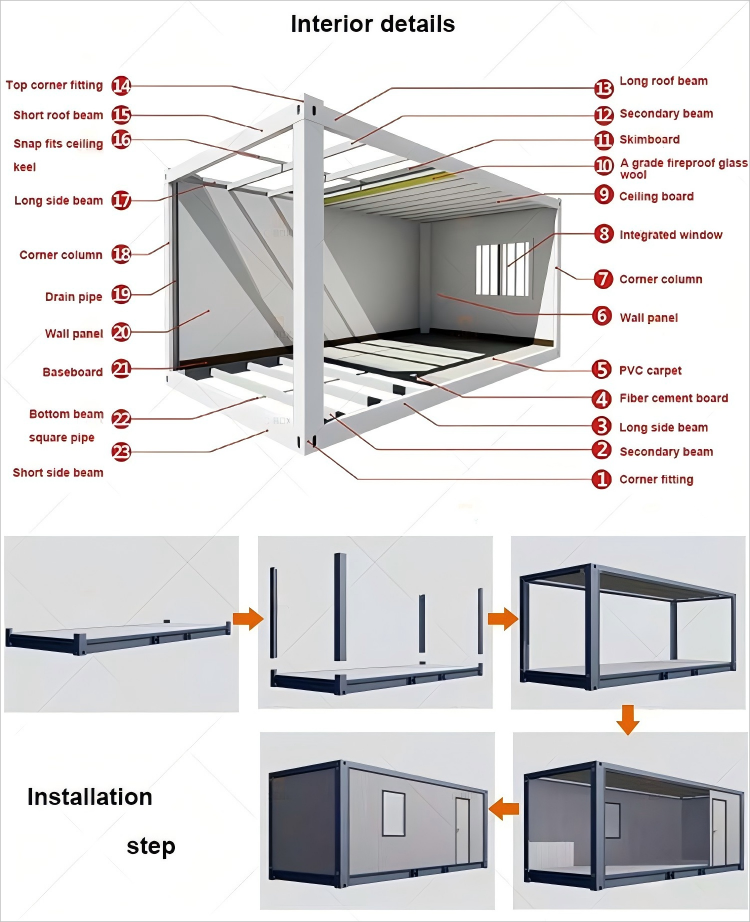





Modular prefab housing, or "quick-assembly housing," consists of factory-built, standardized components (e.g., walls, floors, roofs) designed for rapid on-site installation. Constructed with lightweight materials like steel frames, composite panels, or timber, these units are transported to sites and joined using mechanical fasteners or interlocking systems. Key advantages include minimal labor requirements, short construction timelines (hours/days vs. weeks), and cost-effectiveness. They are widely used for temporary shelters (disaster relief, construction worker quarters), remote accommodations (cabins, glamping pods), and even permanent homes in urban or rural areas. Modern designs often integrate insulation, utilities, and smart features. Modular housing also reduces waste through precision manufacturing and supports sustainability via reusable components. Its adaptability to diverse climates and scalability make it a versatile solution for affordable, flexible living spaces.






Advantages and Uses of Modular Prefab Housing






